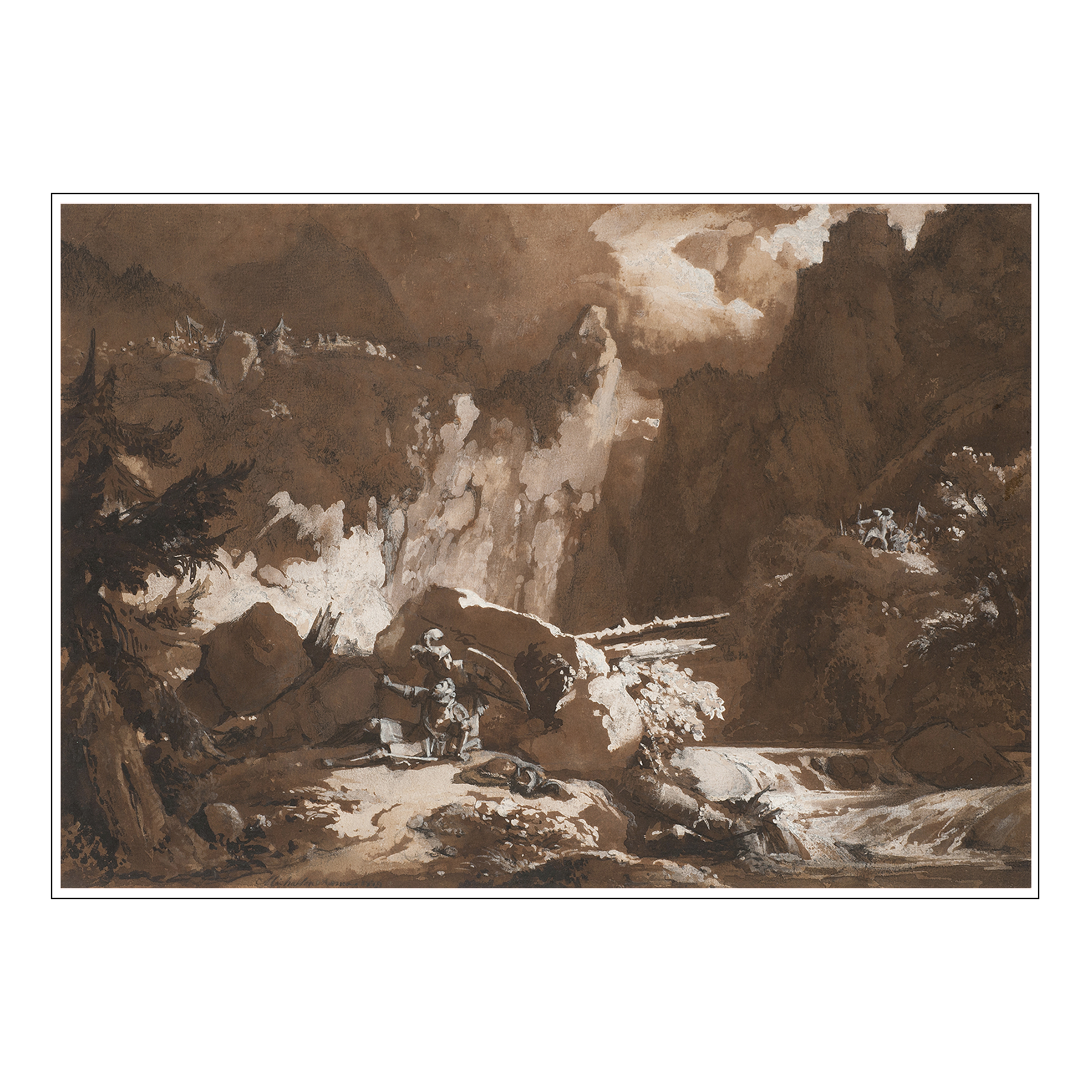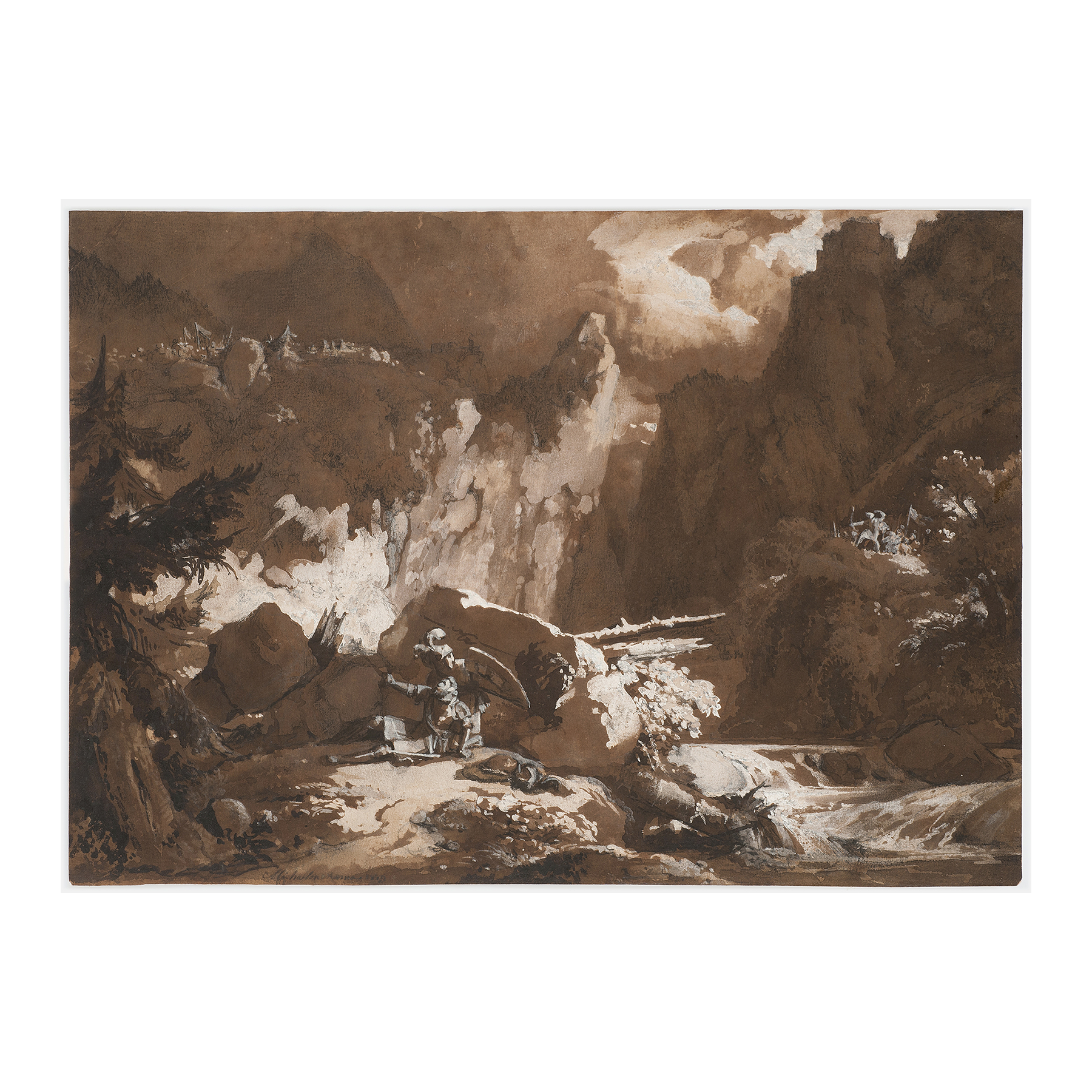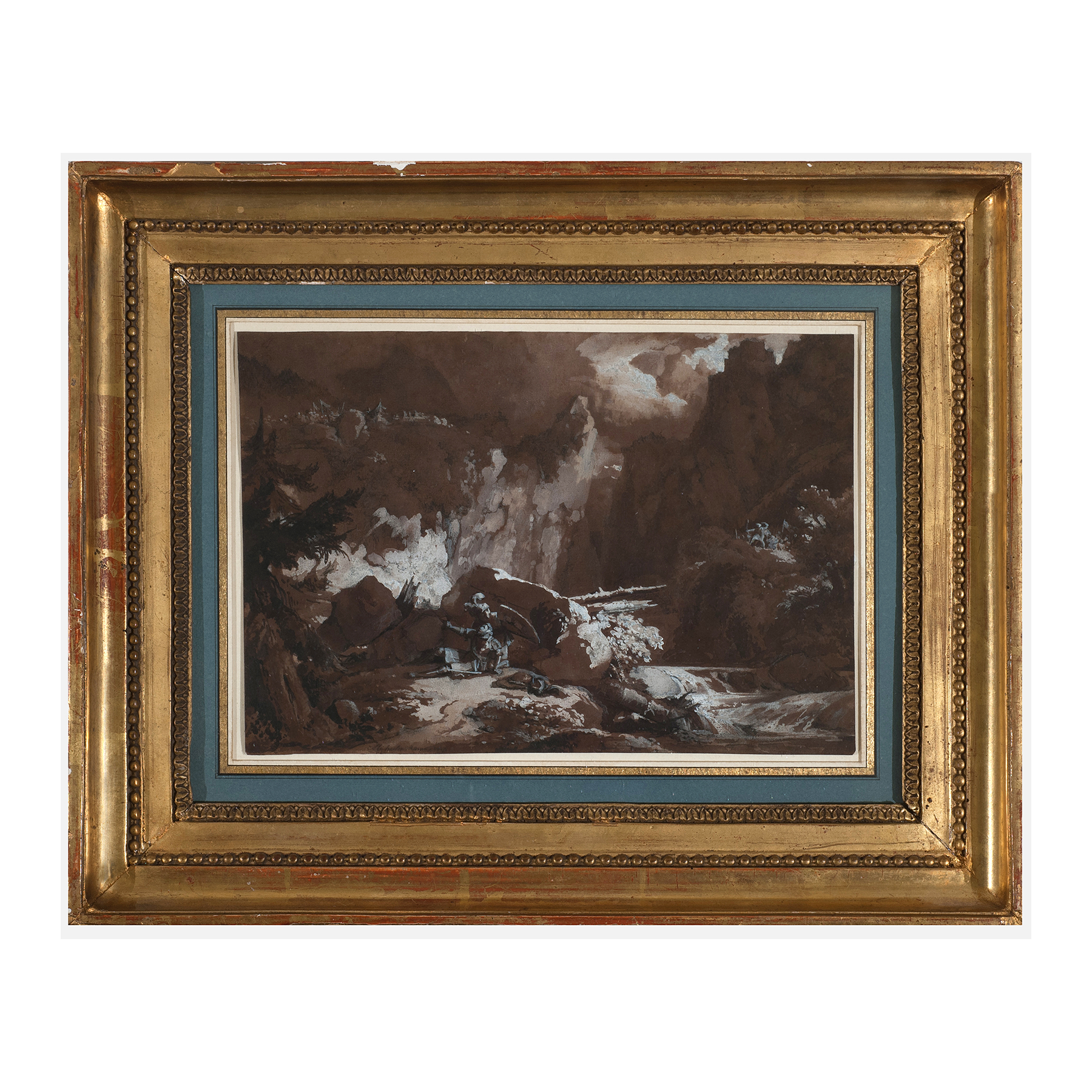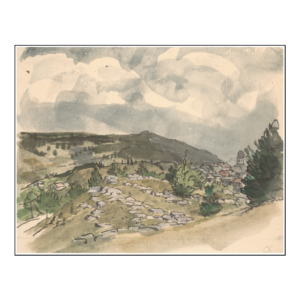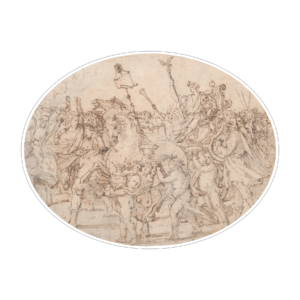Achille Etna Michallon
Paris 1796 – 1822
The Death of Roland at the Ronceveaux Pass
Signed, located, and dated Michallon Roma 1819 lower left with pencil.
Pen and brown ink, brown wash over pencil sketch, white gouache.
Provenance – Paris, Rossini, 21 October 2008, n° 31; private collection.
After winning the Grand prize for historical landscape in 1817, Achille Etna Michallon went to Italy, where he stayed until 1821, traveling between Florence and Sicily. Drawing inspiration from rugged, rocky landscapes and untouched nature, he developed his interest in light and water effects. This drawing illustrates the tragic death of medieval French hero Roland, Charlemagne’s nephew, during the battle of the Ronceveaux pass in the Pyrenees. Initially a literary subject, this episode of Charlemagne’s reign was also often treated in painting, although its historical veracity has always been questioned. Revealed for the first time after Charlemagne’s death by Eginhard in his Vita Karoli Magni and mythologized by the 11th-century epic poem The Song of Roland, the battle is supposed to have happened on 15 August 778.
Michallon did not illustrate the battle but focused on the death of the hero, who is represented lying on the floor, his leg stuck under a rock, while a companion tries to shelter him under his shield. The majestic surroundings, dark and hostile, reveal the mightiness of natural elements: threatening clouds, peaky mountains, rifts, ravines, and waterfalls. The large wash strokes, heightened with white gouache, underline the tragic atmosphere of the hero’s death, stuck in the high cliffs, his future tomb.
A preparatory project for the painting The Death of Roland at the Ronceveaux pass (Paris, Louvre Museum, inv. 6632) officially commissioned to Michallon in 1819 for the Galerie de Diane in Fontainebleau, this drawn study exemplifies the renewed interest in both Middle-Age and historical landscape. The painting was exhibited at the Salon des artistes français the year it was painted and met a huge success. Michallon executed several preparatory sketches, one of them is in the Strasbourg Musée des Beaux-Arts (inv. 44 2012.1.1) and another one was sold at Beaussant Lefèvre (25/10/2019, Jean-Claude Delauney collection, cf. 1994 Paris, exhibition catalogue Achille Etna Michallon n°97, Paris, Louvre museum).
